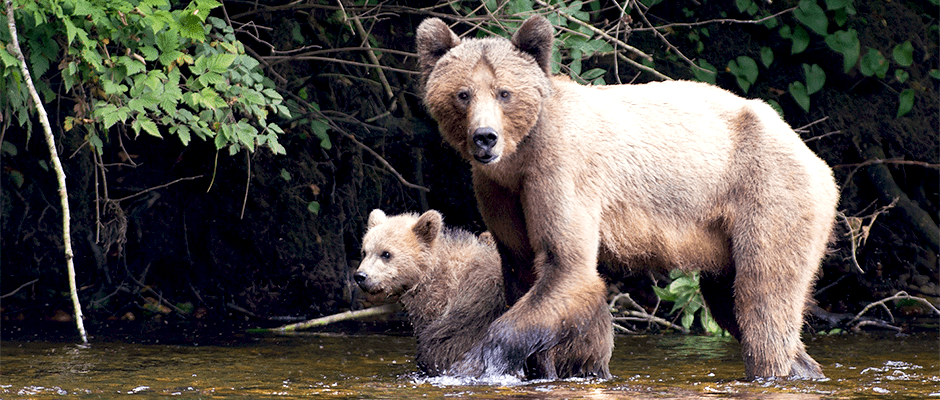Share this article
Road closures pave way for grizzly comeback
In British Columbia’s Monashee Mountains, where an imperiled population of grizzlies gradually recovers, the timber trade has carved out over 10,000 kilometers of dirt roads — more than twice the distance between Vancouver in western Canada and Ottawa in the east. Scientists found that while there were fewer grizzly bears where there were more roads, closing the roads boosted the animals’ numbers.
“Maintaining low road density areas in productive grizzly bear habitat is critical to maintain and recover grizzly bear populations,” said Clayton Lamb, first author on the paper published in the Journal of Applied Ecology, but “when we have a lot of roads on the landscape, we can close them to the public, and the effects are immediate.”
A 1997 estimate put the Kettle-Granby population of grizzly bears (Ursus arctos) at 38 individuals threatened by habitat loss and deadly conflict with humans even after bear hunting was banned the previous year. The province soon shut down some roads and designated more protected areas in the 8,000-square-kilometer landscape, and the grizzly population has since been growing in pockets of high-quality habitat and expanding to western regions it was extirpated from. Even so, the roads densely winding through the landscape have remained a cause for concern about the bears, Lamb said.
A doctoral candidate at the University of Alberta, he and his colleagues obtained DNA samples in the summer of 2015 to reassess the population. They left out cattle blood and piles of rotten wood resembling cached prey to lure the grizzlies, who’d approach the attractant by brushing past strands of barbed wire set up to collect a few of their back hairs. In this way, Lamb’s team gathered genetic fingerprints to identify individual bears and analyze their density throughout the landscape in relation to road density and habitat quality.
Estimating 87 grizzly bears now roamed the region, the biologists discovered that although places with higher road densities had lower grizzly densities, when laws blocked people’s access to roads in these places, bear densities were 27 percent higher.
Cutting off access to roads dampens their negative consequences, he said, since “road densities correlate with impacts to grizzly bear demography because roads are being used by people,” which exacerbates human-wildlife conflict and bear mortality.
The study falls in line with previous research from Canada and the United States showing that high road densities impede grizzlies’ habitat selection and survival, Lamb said.
“Our paper provides further evidence that managing road densities for grizzly bears is a productive option,” he said.
Lamb plans to conduct a similar analysis compiling data for the entire province, which has already initiated the process of managing roads in the Monashee Mountains based on recommendations from his findings.
Header Image: A grizzly bear and her cub wade through a stream in British Columbia. ©Ray Morris








